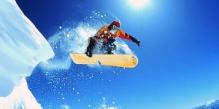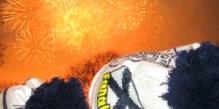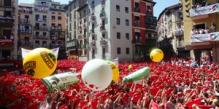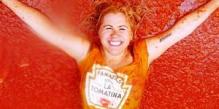Benefit of the doubt made clearer by NRL
A more liberal interpretation of the benefit of the doubt rule by video referees is set to result in an increase in the number of tries awarded during the 2009 NRL season.
While no rule change has been implemented by the NRL, an adjustment in thinking will see the onus of proof swing in favour of the tryscorer.
Rather than looking for a reason to award the try, the man in the box will instead look for a reason not to give the try, with any benefit of the doubt to favour the attacker.
"We're looking at the rules of the game and using them and saying `well what has he done wrong, what rule has he not abided in scoring that try," referee's boss Robert Finch said.
"When you score a try in possession of the football, the rule book talks about placing the ball on the ground with your hand or hands.
"It doesn't mention control, it doesn't mention downward pressure - so when we're adjudicating on a try, we're not considering control or downward pressure because the rulebook doesn't state that.
"For us to take the try off them, they need to have broken a rule.
"If we can't the clarify (whether a rule has been broken) or `geez I'm not sure, I think he had his hand on the ball or I think it's downward pressure', we'll give the try."
But while the video referee will continue to hold sway when it comes to contentious tries, he will no longer have the ability to rule on infringements during the normal run of play, unless they involve a player being put on report for foul play.
The move comes on the back of the two-referee system being implemented in all NRL games this season, a system Finch says has received wide-spread support from coaches during the opening few weeks of trial matches.
"As a game we need to say either we embrace technology and the game becomes slower or we use it sparingly ... and accept that sometimes a human's going to make a mistake," Finch said.
"We're not not moving away from technology, but we're using it where we need to."
One aspect of the `pocket' or `assistant' referee that has become obvious during trial games is the different depth of their positions behind the attacking line during games.
Finch admitted the referees were scouting the teams they were about to officiate so as to familiarise themselves with different styles of play.
"For example, from what I've seen of St George Illawarra briefly this year, they're playing very deep and attacking very deep, so we need the pocket referees to be deep," Finch said.
"The distance is not a massive issue, we get in and we get out. With other sides that play flatter, we can stand flatter.
"The distance and angles are dependant on the teams that your refereeing and the field positions that they're in."
 © 2025 AAP
© 2025 AAP















Post a comment about this article
Please sign in to leave a comment.
Becoming a member is free and easy, sign up here.